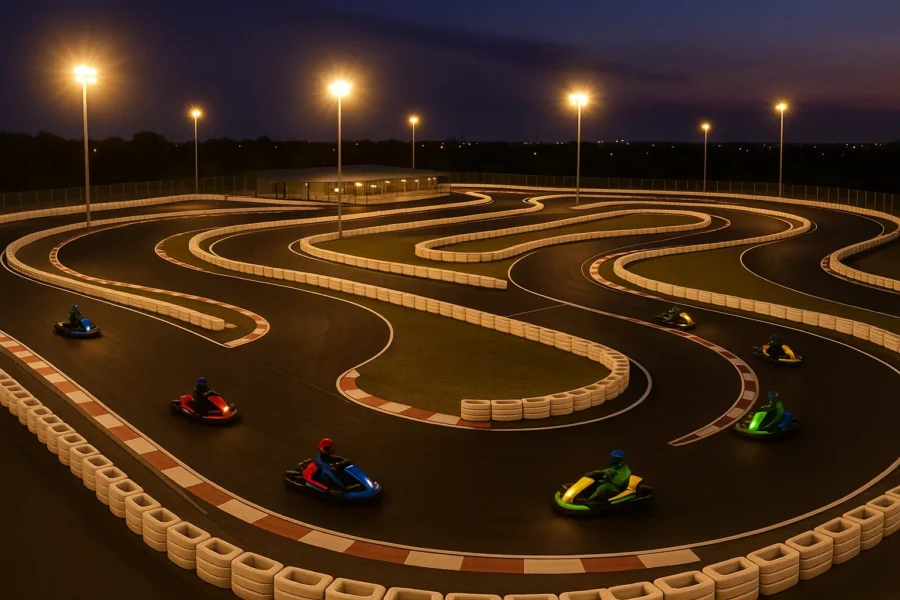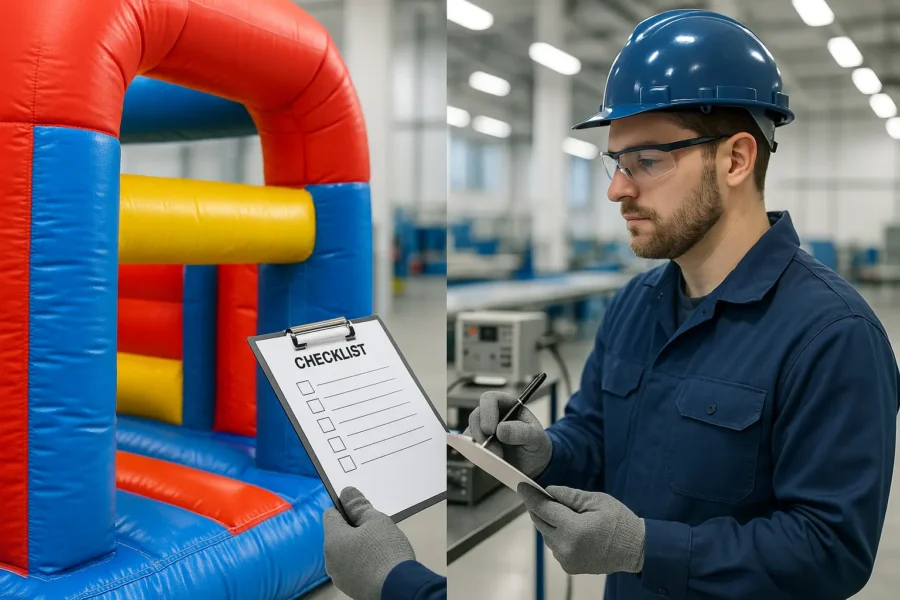When it comes to go-karting, choosing between electric and gas-powered karts is a significant decision that can influence the overall experience at your track, as well as your business’s environmental impact, operating costs, and maintenance requirements. Both types of karts have their own unique advantages and challenges, making the choice between them crucial depending on your specific needs and audience. In this blog, we’ll explore the key differences between electric and gas karts to help you determine which is the better option for your track.

Environmental Impact: A Greener Option
One of the most apparent differences between electric and gas karts lies in their environmental impact.
- Electric Karts:
Electric karts are the clear winner when it comes to being environmentally friendly. They are powered by electricity, which means they produce zero emissions and operate almost silently. This makes them an ideal choice for indoor tracks or venues located in areas with strict noise regulations. By choosing electric karts, you not only contribute to a cleaner environment but also appeal to eco-conscious customers. - Gas Karts:
Gas-powered karts, on the other hand, run on gasoline or diesel, leading to emissions of pollutants and higher noise levels. While they deliver a more traditional racing experience, the environmental impact is significant, especially for outdoor tracks where exhaust fumes and noise can be more apparent.
Operating Costs: Saving in the Long Run
Another critical factor to consider is the cost associated with running each type of kart.
- Electric Karts:
Electric karts are generally more cost-effective in the long run. The cost of electricity is lower than that of gasoline, and electric karts require less frequent maintenance. There’s no need for oil changes, and the absence of complex engines reduces the risk of mechanical failures. This translates to lower operating costs over time, making electric karts a financially attractive option for track operators looking to minimize expenses. - Gas Karts:
While gas karts may have a lower upfront cost, they tend to incur higher operating expenses. Fuel costs are more volatile, and gas engines require regular maintenance, including oil changes, filter replacements, and engine tune-ups. Over time, these costs can add up, making gas karts more expensive to operate, especially for tracks with high usage.
Maintenance: Simplifying the Process
Maintenance is a crucial consideration when deciding between electric and gas karts, as it directly affects the downtime of your fleet and overall operational efficiency.
- Electric Karts:
Electric karts are known for their simplicity and ease of maintenance. With fewer moving parts and no need for engine-related upkeep, electric karts require less frequent servicing. The primary focus of maintenance is on the battery and electrical systems, which are relatively straightforward to manage. This simplicity translates into less downtime and lower maintenance costs, making electric karts an appealing choice for busy tracks. - Gas Karts:
Gas karts, while offering robust performance, come with more complex maintenance needs. The internal combustion engine requires regular attention, including oil changes, air filter replacements, and occasional repairs. These maintenance tasks can be time-consuming and costly, especially if you have a large fleet of karts. Additionally, the mechanical complexity of gas engines increases the likelihood of breakdowns, leading to potential downtime and disruptions to your track’s operations.
Performance: Speed and Power
When it comes to performance, both electric and gas karts offer unique advantages that cater to different types of drivers.
- Electric Karts:
Electric karts provide smooth and instant acceleration, thanks to the nature of electric motors, which deliver maximum torque from the start. This results in a more consistent and predictable driving experience, which is particularly beneficial for beginners and indoor tracks where quick, responsive handling is essential. Additionally, the ability to customize speed settings allows track operators to tailor the performance of electric karts to different skill levels, enhancing safety and enjoyment. - Gas Karts:
Gas-powered karts, with their traditional internal combustion engines, deliver a raw and authentic racing experience. They typically have a higher top speed and can offer more power, especially on outdoor tracks with longer straightaways. The sound and vibration of a gas engine contribute to the adrenaline rush that many experienced drivers seek. However, the acceleration can be less smooth compared to electric karts, and the variability in engine performance might require more skill to handle.
User Experience: Tailoring to Your Audience
The overall user experience is perhaps the most subjective factor, but it plays a crucial role in determining the best choice for your track.
- Electric Karts:
For many users, especially families, beginners, and younger drivers, electric karts offer a more accessible and comfortable experience. The quiet operation and smooth acceleration make for a less intimidating introduction to go-karting. Electric karts are also more suitable for indoor tracks or tracks located in noise-sensitive areas, as they allow for extended hours of operation without disturbing the surrounding community. - Gas Karts:
Gas karts provide an immersive and exhilarating experience that appeals to enthusiasts and those seeking a more traditional racing feel. The roar of the engine and the tactile feedback of the kart make for an engaging drive that can’t be fully replicated by electric karts. For outdoor tracks or events focused on competitive racing, gas karts may still be the preferred choice due to their authentic feel and higher speeds.
Conclusion: Which is Better for Your Track?
The decision between electric and gas karts ultimately depends on your track’s specific needs and the preferences of your customers.
- Choose Electric Karts if:
You prioritize environmental sustainability, lower operating and maintenance costs, and a user-friendly experience for a broad audience. Electric karts are ideal for indoor tracks, eco-friendly venues, and businesses looking to reduce their carbon footprint. - Choose Gas Karts if:
You value the traditional racing experience, higher top speeds, and are catering to an audience that craves the thrill of driving with the sound and feel of a combustion engine. Gas karts are better suited for outdoor tracks and events focused on competitive racing.
By carefully considering these factors, you can select the type of kart that best aligns with your track’s vision and enhances the overall experience for your customers.



